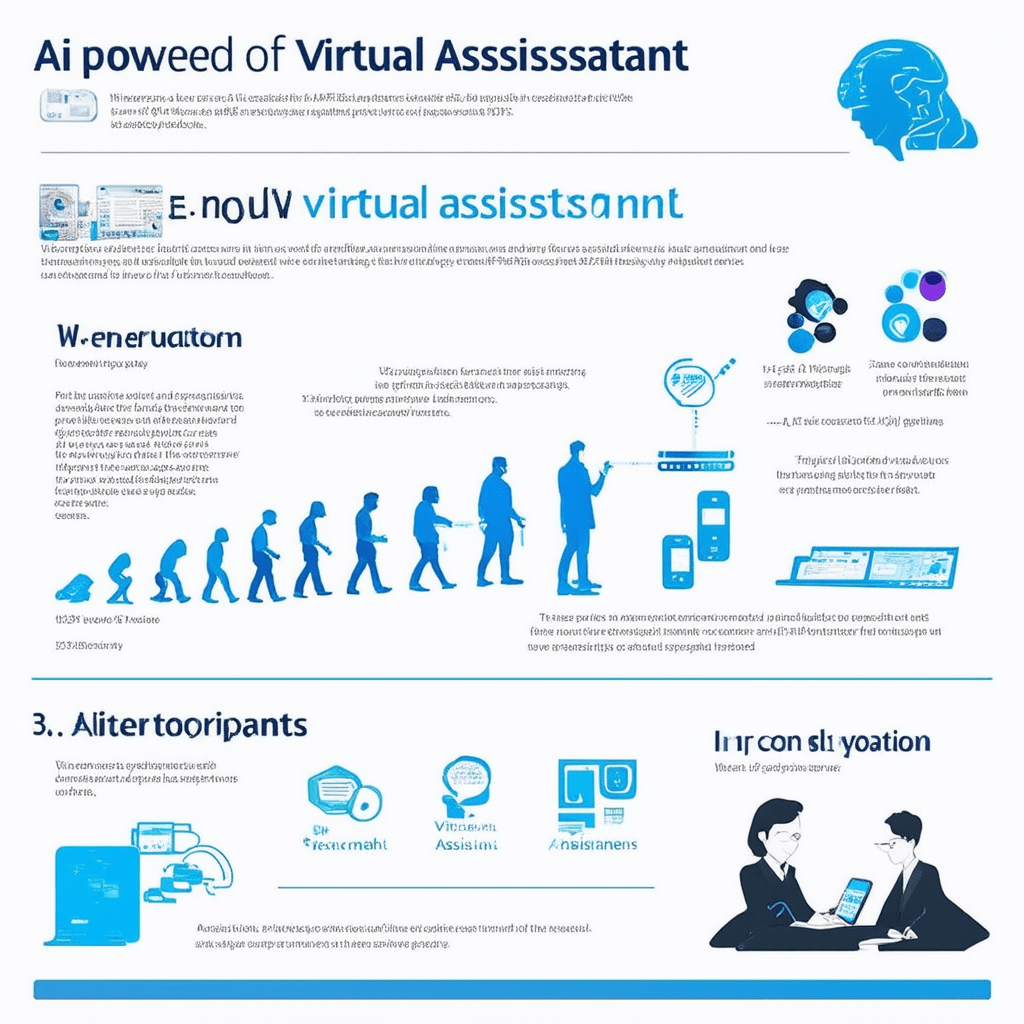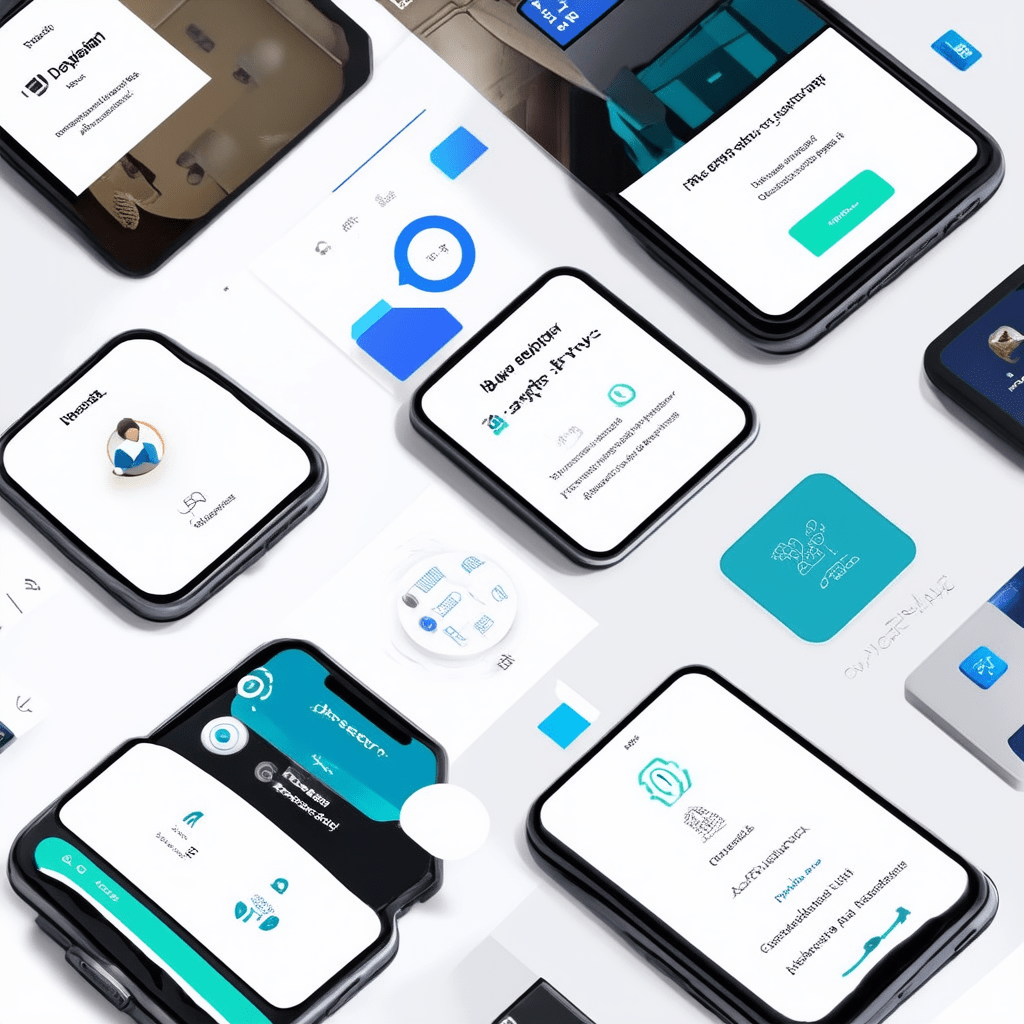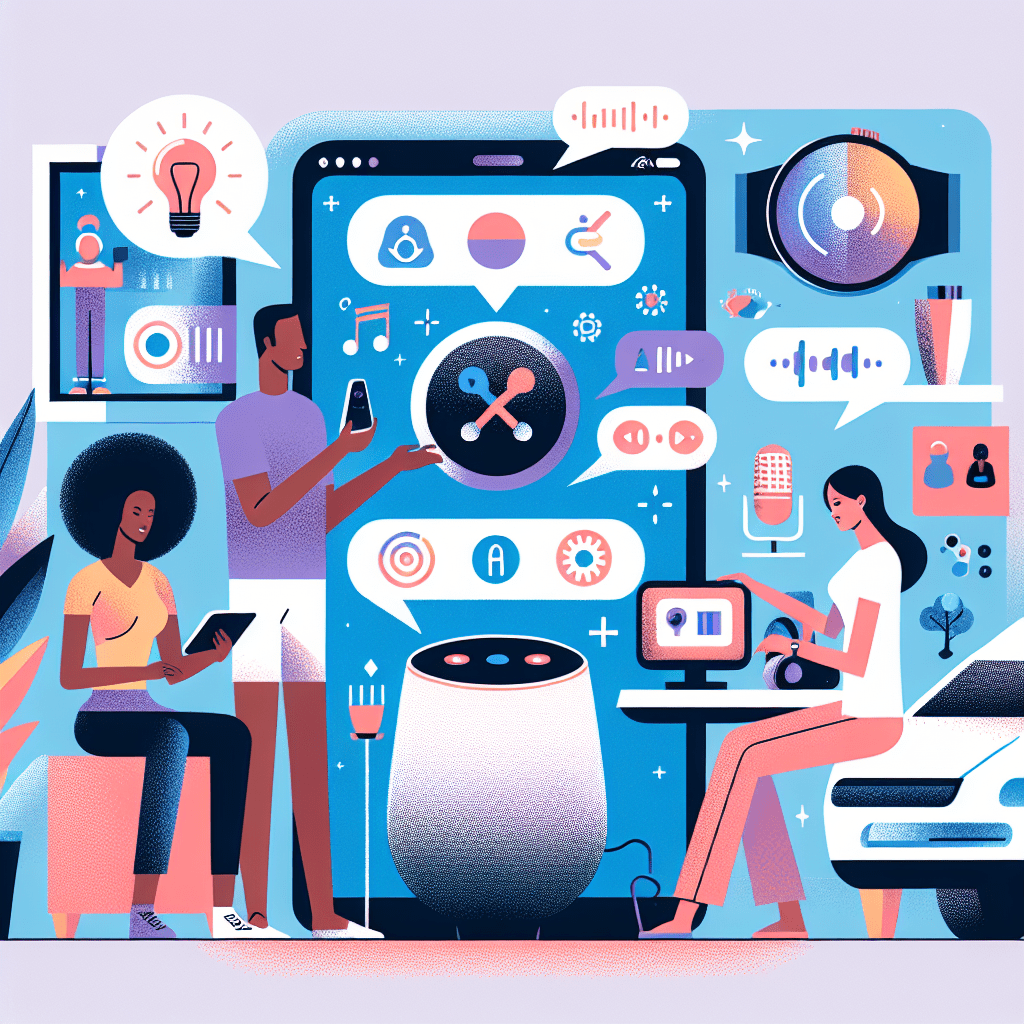Introduction: A Deep Dive into AI-Powered Virtual Assistants
Table of Contents
Artificial Intelligence (AI) has truly transformed since its early days of basic if-then rules and rudimentary decision trees. Today, these systems are not just about crunching numbers but about understanding the nuances of human language and intention. This transformation has been crucial in the development of AI-powered virtual assistants like Siri, Alexa, and Google Assistant. These assistants aren’t just gadgets; they’re practically family members now, helping us navigate our daily lives with an ease that would’ve seemed like science fiction a decade ago. (Read our full guide on AI Tools and Applications.)
The sophistication of these virtual assistants lies in their ability to process natural language. Instead of interpreting commands word by word, they grasp the meaning behind them. Take Siri, for instance. When you ask, “What’s the weather like today?” it doesn’t just look for the word ‘weather’ but understands you’re seeking a weather forecast for your location. In 2019, a study by Loop Ventures found that Google Assistant answered 92.9% of queries correctly, demonstrating how far these technologies have come.
In practical terms, these AI companions handle everything from setting your morning alarm to managing your smart home devices. Imagine coming home and simply saying, “Alexa, turn on the lights,” and having your home come to life around you. This isn’t just convenience; it’s a shift in how we interact with our environment. Virtual assistants are also invaluable in accessibility, offering hands-free control for individuals with physical limitations.
The journey from AI theory to practical, everyday applications is marked by continuous learning and adaptation. Machine learning algorithms allow these systems to improve as they interact with users. It’s like having an assistant that gets better with every conversation. This capability makes them indispensable tools, seamlessly integrating into our lives and marking a significant milestone in AI’s evolution. We’re witnessing a moment where technology is not just used but becomes a part of our daily rhythm.

Key Benefits and Advantages
AI-powered virtual assistants, like Amazon’s Alexa, Google Assistant, or Apple’s Siri, are no longer just the stuff of science fiction. They’re embedded in our lives, performing tasks that range from setting reminders to controlling smart home devices. These assistants rely on advanced algorithms and machine learning techniques to interpret human language and carry out tasks efficiently. Essentially, they break down our speech into data that can be processed, understood, and acted upon. Over time, they learn from our interactions, becoming more attuned to our preferences. For instance, if you often ask your assistant to play jazz music, it might start suggesting new jazz artists or create a custom playlist for you.
But as these assistants get smarter, the question of data privacy becomes more pressing. With every command, these devices collect data, which can include anything from voice recordings to details about your daily routines. This information helps them improve their service, but it also raises privacy concerns. In my experience, a common mistake I see is users neglecting to adjust their privacy settings. It’s crucial to dive into the settings of your device and understand what data is being collected and how it’s used. For example, you can usually set your device to automatically delete recordings after a certain period or opt out of data sharing altogether.
From a practical standpoint, managing these settings can protect your personal information from unwanted access. The key takeaway here is that while AI assistants can make life more convenient, it’s essential to stay informed and proactive about your privacy. After all, in the real world, safeguarding our data is just as important as the convenience these assistants provide.
- Personalization of user experience through machine learning isn’t just a buzzword; it’s a practical application that has transformed how we interact with technology. By analyzing user behavior and preferences, AI-powered virtual assistants can tailor their responses and suggestions to fit the unique needs of each individual. Imagine an assistant that knows you prefer waking up to soft music and automatically sets your morning alarm with your favorite playlist. In my experience, this level of personalization leads to a more intuitive interaction, making technology feel like a natural extension of oneself.
- Convenience in managing daily tasks and schedules is a game-changer for anyone trying to juggle work, home, and personal responsibilities. Virtual assistants can seamlessly integrate with calendars and to-do lists, sending timely reminders and even predicting when you’re most productive. A common mistake I see is underestimating how much time these small conveniences save. Over a month, those few minutes here and there add up, freeing you to focus on more important tasks.
- Enhanced interaction with smart home devices has transformed our living spaces into intelligent environments. From adjusting the thermostat to turning off lights, virtual assistants offer a hands-free way to control home devices. In practical terms, this means more comfort and efficiency without the need to manually manage each device. A friend once shared how their assistant automatically dimmed the lights and locked the doors at night, providing peace of mind and security.
- Improved productivity through reminders and task management is more than just setting alarms. These assistants can prioritize tasks based on urgency, set recurring reminders, and even suggest when to take breaks, optimizing your workflow. The key takeaway here is that by offloading routine tasks, you can concentrate on creativity and strategic thinking, areas where human insight is irreplaceable. In the real world, this means achieving more with less stress.
How It Works: A Practical Explanation
AI-powered virtual assistants are like digital Swiss Army knives, packed with capabilities that simplify daily tasks. Imagine waking up and, without lifting a finger, getting the latest news briefing, your personalized schedule, and a reminder that it’s your best friend’s birthday. It all starts with Voice Recognition. When you speak, the assistant captures the sound waves of your voice, dissecting it with advanced algorithms. This process isn’t just about converting sound into text; it’s about understanding the nuances of your accent, tone, and even the background noise that might be present.
Once your words are transcribed into text, Natural Language Processing (NLP) kicks in. This is where the magic happens. The system dives into the context, not just the content. For instance, when you say, “Can you remind me about the meeting tomorrow?” NLP figures out that you’re referring to your calendar, not just any random meeting. It deciphers whether you want a reminder set, an email sent, or perhaps a nudge on your phone.
Machine Learning (ML) is the secret sauce that helps these assistants evolve. It learns from every interaction, adapting to your preferences and habits. Suppose you always ask Alexa to dim the lights before bed. Over time, it might suggest doing this automatically at your usual bedtime. Or, if you often play classical music during dinner, next time, it might queue up your favorite playlist as you sit down to eat.
In my experience, one of the most impressive features of these assistants is their ability to integrate with smart home devices. Imagine walking into your home, and with a simple “Good evening,” the lights dim, the thermostat adjusts, and your favorite evening playlist starts. It’s not just about executing tasks; it’s about creating a seamless environment that anticipates your needs.
The key takeaway here is that AI-powered virtual assistants are not static tools. They are dynamic, ever-evolving systems, constantly improving to offer a more personalized and efficient experience. They transform the way we interact with technology, making it more intuitive and, ultimately, more human.

Case Study: A Real-World Example
AI assistants are transforming various sectors in profound ways. Take healthcare, for instance. They’re not just about booking appointments anymore. Imagine a virtual nurse that learns a patient’s habits and preferences. In my experience, these assistants can send timely reminders for medication, preventing missed doses that are crucial for chronic illness management. Additionally, they can track symptoms and provide data to doctors, potentially catching issues early.
In finance, AI isn’t just about transaction management. It acts like a vigilant watchdog, analyzing spending patterns to alert users about irregular activities. For example, if your card is used in two different locations within a short time, an AI assistant might flag it as suspicious, potentially preventing fraud. From a practical standpoint, this immediate alert system can save users not just money, but also the hassle of dealing with fraud aftermath.
Education is seeing a revolution with AI-powered tutors. They offer tailored learning experiences by analyzing students’ strengths and weaknesses. A common mistake in traditional education is one-size-fits-all teaching. AI solves this by adapting content, suggesting resources, and even testing students in ways that suit their learning styles.
In entertainment, AI curators are your personal movie critics. They learn what you like and dislike, providing recommendations that feel like they know you. This isn’t just about suggesting the next movie; it’s about enhancing your leisure time by cutting down the search.
At home, AI assistants go beyond managing appliances. They analyze energy usage patterns and suggest optimizations that can lead to significant savings. For instance, they might recommend running your dishwasher during off-peak hours, reducing electricity bills.
And then there’s customer support, where AI is a game-changer. In my view, these assistants can handle basic inquiries with ease, freeing up human agents for complex issues. This not only speeds up response times but also enhances customer satisfaction, as users get quick answers to their questions without waiting in long queues. The key takeaway here is that AI is not just about automating tasks; it’s about enhancing the user experience across various domains.
Conclusion: Key Takeaways
The future of AI assistants is poised to transform our daily lives in ways that were once the stuff of science fiction. We’re on the brink of a new era where these digital helpers will not just respond to commands but anticipate our needs with uncanny precision. This leap forward hinges on advancements in natural language understanding, allowing AI to grasp the nuances of human speech more effectively. Think of it like teaching a foreign exchange student not just the language but also the cultural nuances.
Imagine waking up to an assistant that already knows you’ll need an umbrella because it checked the weather and remembered your morning walk habit. This is no longer a far-off dream but an impending reality, thanks to predictive analytics. By analyzing data patterns, AI can make educated guesses about your needs. For instance, if your assistant notices you often run out of milk on Fridays, it might suggest an automatic reorder before your weekend starts.
Seamless integration is another frontier. With the Internet of Things expanding, AI assistants could soon coordinate with your smart oven to preheat dinner as you leave the office, or adjust your home’s lighting based on your bedtime routine. These advancements will turn AI assistants into proactive participants in our lives, rather than reactive tools. The key takeaway is that these smart entities will become more than just devices; they’ll be partners in managing our time and resources, making our routines smoother and more efficient.

